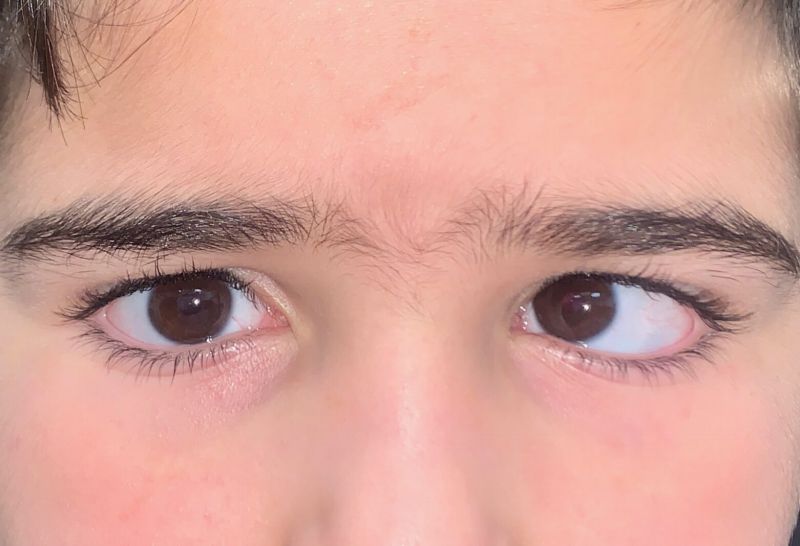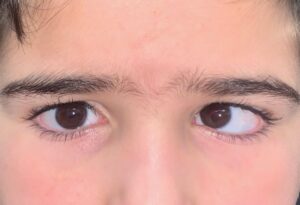Eye diseases
Children’s strabismus

What is children’s strabismus?
Strabismus is an eye disease characterised by the loss of parallelism of the eyes, causing one or both of them to deviate from their normal position. This deviation can occur in any direction: inward (esotropia), outward (exotropia), upward (hypertropia), or downward (hypotropia). It can also be intermittent or constant.
It is one of the typical childhood eye diseases, affecting about 4-5% of children. It can appear from the first months of life (congenital strabismus) or years later and even in adulthood (link to adult strabismus).
Diagnosing and treating it early is key to prevent the child from developing visual problems as a result of this eye misalignment. The most important of them is amblyopia or “lazy eye” (link), derived from the compensation the brain carries out for not seeing double, thus suppressing the vision of one of the eyes. Another consequence of childhood strabismus is the lack of development of binocular vision and stereopsis, which allows them to see in relief, perceive depth and calculate distances. Last but not least, the aesthetic and psychological effect that having a deviated eye can have on the child.
Symptoms
Causes and risk factors
Treatment
The main manifestation of childhood strabismus is the eye deviation itself. However, this is not always visible to the naked eye, especially when it is intermittent and only becomes evident in certain circumstances, particularly in a state of fatigue or weakness (a feverish process, sleepiness, at the end of the day, etc.). Seeing an ophthalmologist regularly for a comprehensive eye check-up can help prevent these cases from going unnoticed.


